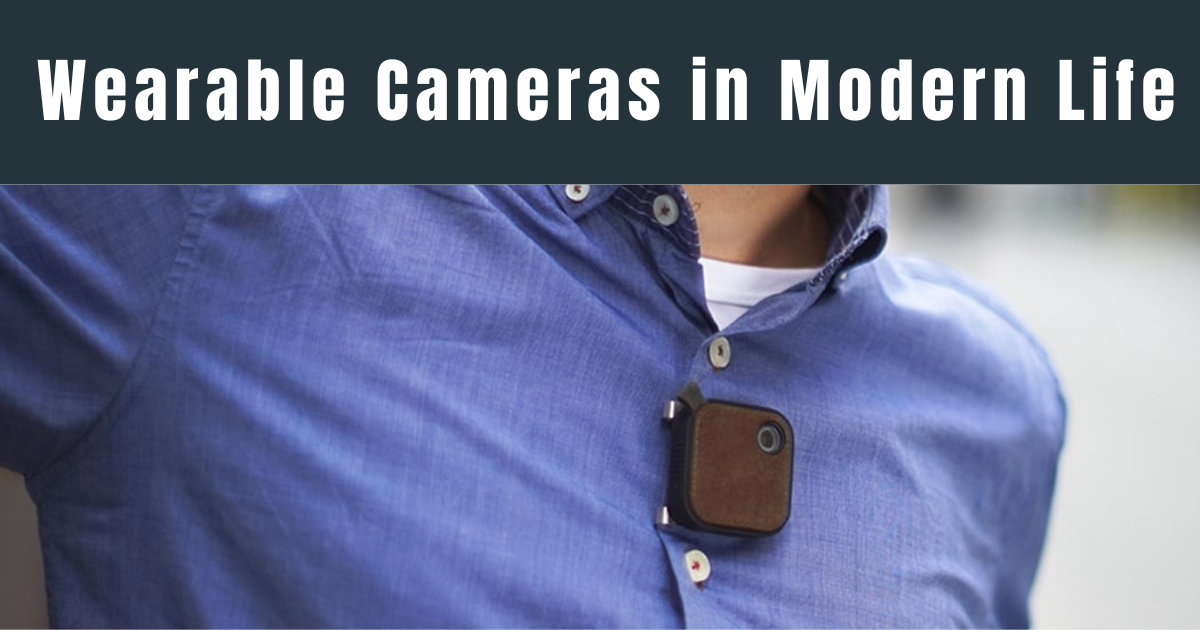The handheld and wearable cameras, which are small and easy to carry, are worn on a person’s wrist or finger. Such equipment has quickly become a key part of modern technology. Their enlarged approval characterises a cultural move towards how we record our reality and interact with our environments. The movement is more than just a fleeting fad, picking up enormous momentum among a broad spectrum of users, from cutting-edge technophiles to social media blogging personalities, and even professional athletes.
As per Pristine Market Insights, the wearable camera market is on a sharp growth path as it mirrors the growing need for these devices for both personal and business purposes. For example, in January 2023, Hytera Communications, debuted its Body Worn Camera (BWC) model, ‘GC550 2K Mini Body Camera’, designed with rigorous emphasis on ergonomics and an excellent device to facilitate workplace openness and staff safety for law enforcement officers and security personnel. This introduction of professional-grade devices to the workplace is indicative of how wearable cameras are really changing not just individual lifestyle and content production but also workplace environments at large.
Types of Wearable Cameras
The wearable cameras are a varied group of devices which each tailored for an exact purpose. The body-worn cameras, which are mainly used by law enforcement and safety personnel which are intended for safety and transparency as well as evidence collection. For venture enthusiasts, the action cameras such as those from GoPro are the go-to choose. They are compressed and durable, also with often waterproof, which makes them ideal for capturing high-speed activities like surfing and mountain biking as well as skydiving.
The smart glasses with combined cameras, that is, the Ray-Ban Meta glasses, give a hands-free way to record video and take photos, all while keeping a discreet and first-person perspective. Lastly, there are clip-on and miniature cameras, and these cameras are small, highly movable devices intended for everyday use and travel, or to offer unique and creative angles that are problematic to achieve with larger cameras.
Key Features Driving Popularity
The growing acceptance of wearable cameras is driven by the incorporation of main landscapes that improve user experience and adaptability. Their lightweight and portable projects make them easy to carry and wear, effortlessly assimilating into daily life. These High-resolution video and photo capture, often in 4K, ensure crisp and detailed footage. Nowadays, cameras give vigorous connectivity choices which include Wi-Fi and Bluetooth, for easy file transfer and real-time streaming to social media platforms. The device normally has long battery life and ample storage capacity often stretches and allows for long recording sessions without a disruption.
Such devices are built for robustness and with waterproof and shockproof covers that make them flexible to an extensive range of environments. The combination of progressive features, which include AI for facial recognition and object tracking which along with real-time streaming and elevates wearable cameras from simple recording tools to sophisticated and intelligent devices.
Applications in Daily Life
In content making, they are vital for vloggers and influencers and which permits them to produce immersive and first-person stories for platforms such as YouTube and TikTok. For sports and adventure enthusiasts, such devices are vital for documenting everything from a hike to a skydiving jump are providing a dynamic lookout that was once impossible. The professionals in diverse fields also advantage; journalists use them for on-the-scene reporting, whereas law enforcement and safety personnel rely on them for transparency and evidence collection.
Furthermore, the wearable cameras are an influential tool for personal safety, giving a way to document connections and providing peace of mind for families monitoring loved ones. Ultimately, such devices make life’s moments more immersive and tangible as well as shareable.
Benefits of Wearable Cameras
The wearable cameras give a range of paybacks that improve both daily life and specialised work. Their hands-free process permits continuous multitasking while recording, which provides important convenience. By capturing authentic, first-person viewpoints, they allow a more personal and immersive form of storytelling. In a specialised context, they improve individual safety and responsibility which mainly for protection and law enforcement. It also supports effective certification and workflow. For everyday users, these cameras provide a convenient way to spontaneously capture memories and inspire creativity in content generation and whether for travel logs or social media.
Conclusion:
The wearable cameras are more than a passing tendency; they are a transformative expertise. By giving hands-free and first-person perspectives as well as a host of advanced features, they are reforming how we document our lives, improve safety, and modernise professional work processes. Their suitability, adaptability, and capability to capture authentic moments make them an essential part of the current lifestyle.
